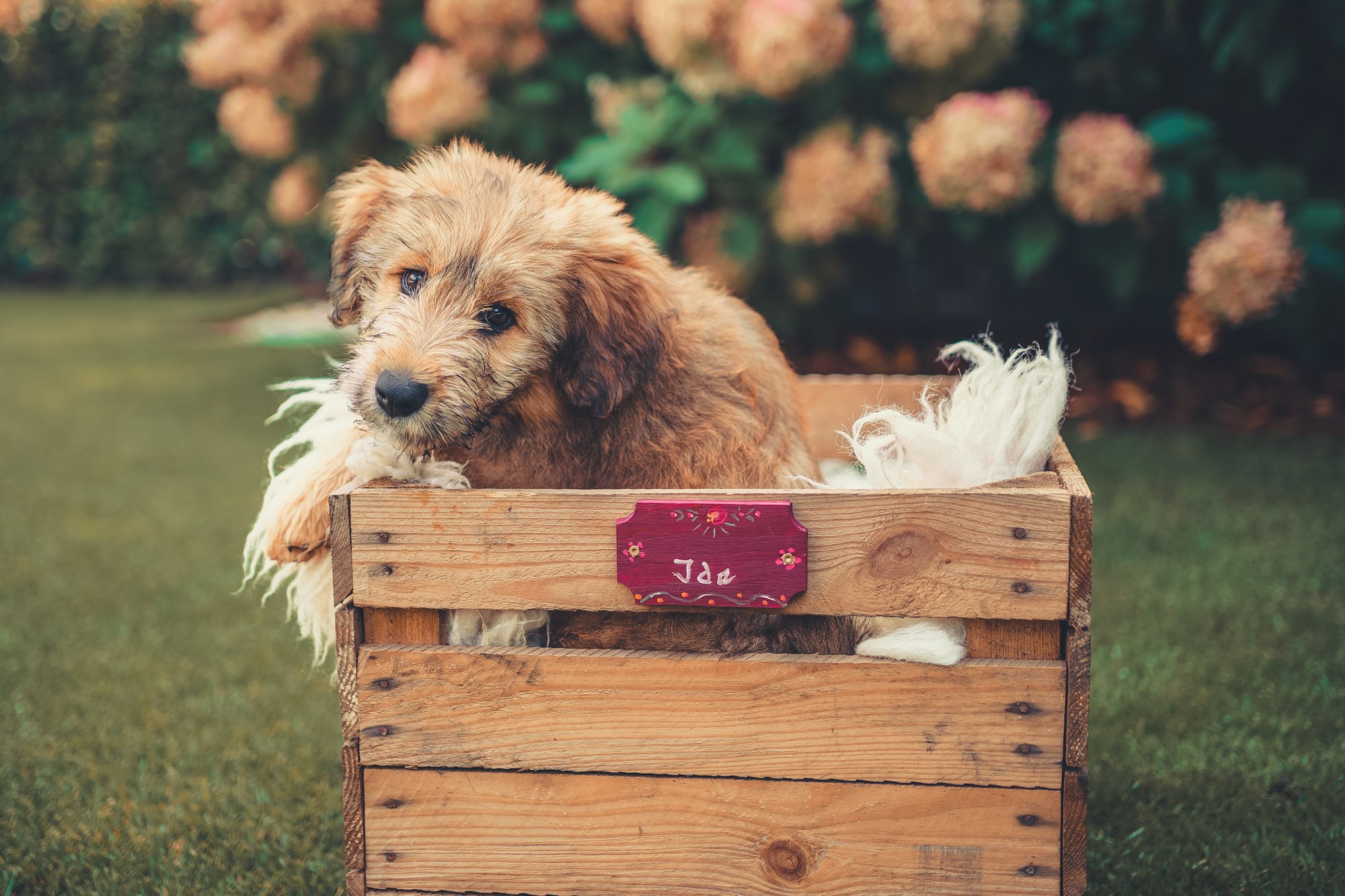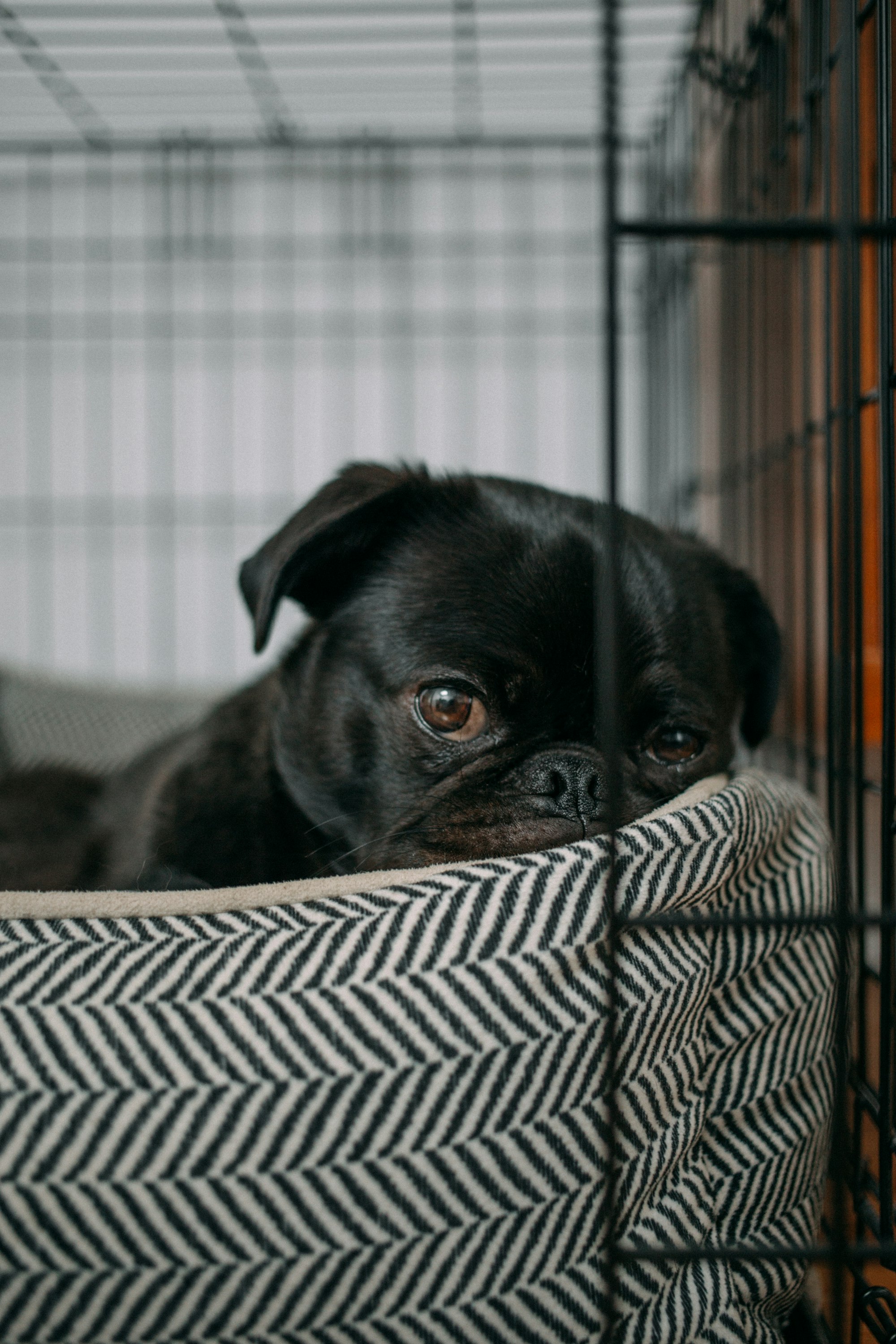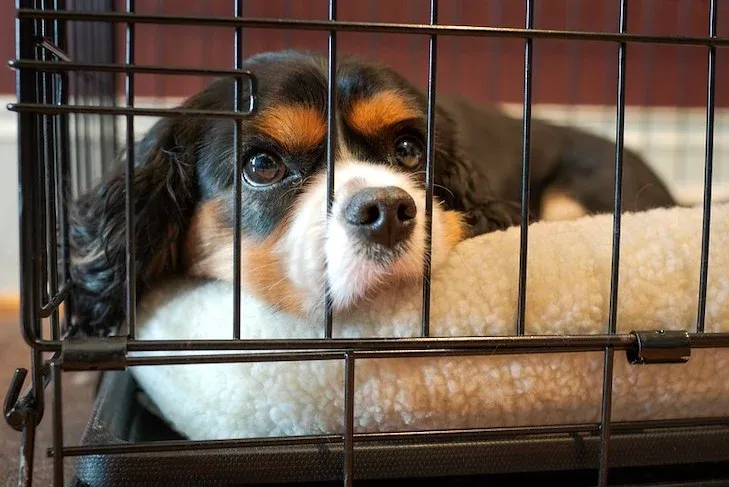Bringing a new puppy into your home is an exciting yet challenging endeavor. One aspect that often perplexes pet owners is how to handle a crying puppy in the crate. In this guide, we'll explore the intricacies of crate training, understanding why puppies cry, and how to strike the right balance between compassion and discipline.

Understanding Puppy Crying
Alright, let's dive into the world of puppy communication! Puppies have their own language, and crying is a big part of it. But before you start worrying, it's essential to understand that not all cries are created equal.
Sometimes, it's just your furry friend expressing themselves - maybe they're a little lonely, need attention, or simply want to say, "Hey, I'm here!" Understanding these normal cries versus distress signals is key to responding appropriately.
Benefits of Crate Training
Now, let's talk about the silver lining of crate training. Picture this: a well-behaved, happy pup who sees their crate as a safe haven. That's the dream, right? Crate training goes beyond preventing your favorite pair of shoes from becoming a chew toy. It's about creating a space where your puppy feels secure, establishing a routine, and, believe it or not, fostering discipline.

Determining Appropriate Cry Duration
So, you've got your puppy, a crate, and a few tears. But how long should you let those puppy eyes well up before taking action? Well, it depends on a few factors, and age is a big one. Just like us, puppies need time to adjust. We'll explore the gradual increase in crate time, taking into account those crucial developmental stages.
Remember, patience is your secret weapon here. Think of it like teaching a kid to ride a bike - you wouldn't throw them onto a two-wheeler without training wheels, right? Same goes for puppy crate training.
The First Few Nights: Setting Expectations
Alright, let's talk about those first few nights with your new bundle of joy. It's like bringing a tiny, furry tornado into your home – full of energy, curiosity, and, yep, a bit of drama. The key to surviving these initial nights? Setting some realistic expectations.
Your pup is adjusting to a whole new world, and the crate is part of that adjustment. It's like their cozy bedroom in a new house. Expect a bit of whining, maybe a few puppy protests. But fear not, it's perfectly normal. We're going to take it slow, start with short intervals, and gradually build up their crate time.
Think of it like introducing your pup to their favorite TV show – you wouldn't start with a marathon, right? Same deal here. Short, sweet, and gradually increasing the crate time. And remember, patience is your sidekick in this adventure.
Creating a Comfortable Crate Environment
Now, let's talk about making that crate the equivalent of a five-star puppy hotel. Size matters here – make sure it's just right, not too big, not too small. Goldilocks would be proud.
And let's not forget about ambiance. Toss in a few familiar items – maybe a soft blanket, a toy or two. We want this to be a den of comfort, not a prison cell. Think about it – would you want to hang out in a stark, cold room? Nope, and neither does your pup.
So, fluff up that bedding, add a personal touch, and let your pup feel like they're in their own little canine palace.
Using Positive Reinforcement
Alright, now let's sprinkle some positivity into the mix. Positive reinforcement is like magic in the world of puppy training. When your pup does something right – like chilling in the crate without a fuss – shower them with praise. Treats are the currency of puppy happiness, so don't be stingy.
Remember, we're not about scolding here. Positive reinforcement is the secret sauce that makes your pup associate the crate with all things good. It's like telling them, "Hey, being in here is awesome! Treats, belly rubs, the whole deal."
Consistency is Key
Now that we've laid the groundwork for a puppy paradise in the crate, let's talk about the glue that holds it all together – consistency. Think of crate training like baking cookies. You follow the recipe to the letter each time, right? The same goes for your pup and their crate.
Consistency means sticking to the routine. If you're doing short intervals, keep doing short intervals. If you're rewarding good behavior, keep that treat jar handy. Dogs are creatures of habit – they thrive on predictability. So, when it comes to the crate, be the rockstar of consistency. It builds trust, and trust is the foundation of a well-behaved pup.
Imagine if one day your favorite coffee shop decided to switch up your usual order without warning. Chaos, right? Your pup feels the same way about sudden changes in their routine. So, stay on course, be predictable, and watch the magic happen.
Dealing with Separation Anxiety

Ah, separation anxiety – the arch-nemesis of peaceful crate time. We get it, saying goodbye to those puppy eyes can be tough. But remember, teaching your pup to be alone is a life skill, like learning to ride a bike or parallel park.
Start small – leave them alone for short periods and gradually increase the time. It's like preparing them for a solo adventure. And hey, no dramatic goodbyes. Keep it low-key, like you're just popping out for milk.
Interactive dog toys are your secret weapon here. They keep your pup engaged and distracted, turning crate time into playtime. It's like giving them a little party in their den.
If separation anxiety seems to be turning into a saga, don't hesitate to consult the pros – vets, trainers, they've got your back. They're like the superhero team for puppy problems.
Alternative Solutions
Alright, let's talk about plan B – because sometimes, the crate just isn't the perfect fit, and that's okay. If you're finding that your pup and the crate aren't hitting it off like you hoped, there are alternative solutions that can still keep everyone happy.
First up, puppy-proofing a designated room. Think of it as creating a cozy corner with all the comforts your furball needs. Make it safe, toss in some toys, and voila – you've got a pup paradise without the confinement of a crate.
Interactive toys are also MVPs in the alternative solutions game. They're like the entertainers of the doggy world. Puzzle feeders, chew toys, you name it – they keep your pup engaged and distracted, reducing the need for crate time.
Monitoring and Adjusting Crate Time
Alright, let's put on our detective hats and talk about monitoring and adjusting crate time. Just like Goldilocks searching for the perfect porridge, we're on the hunt for the ideal crate time that suits your pup.
Pay attention to the signals. Is your pup cool, calm, and collected in the crate, or are they channeling their inner drama queen? If it's the latter, it might be time to tweak the schedule.
Gradual adjustments are the name of the game. Don't go from 0 to 60 – slowly increase the crate time based on your pup's comfort level. It's all about finding that sweet spot where your pup feels secure without feeling like they're doing time.
Remember, every pup is unique. What works for one might not work for another. So, stay flexible, be the crate-time detective, and you'll find that golden ratio that keeps everyone content.
Seeking Professional Guidance
Alright, let's talk about when it's time to call in the experts. We get it – sometimes, despite all your best efforts, the crate puzzle just won't solve itself. That's where the superhero team of veterinarians and professional trainers swoop in.
If your pup's crate issues are starting to resemble a Rubik's Cube of confusion, it might be time for a pro perspective. Vets are like the canine health gurus, and they can rule out any medical issues that might be causing distress during crate time.
Now, professional trainers – consider them the doggy whisperers. They've got the tricks up their sleeves to decode your pup's behavior and tailor a crate training plan that suits your furry friend's unique personality.
Don't think of it as waving the white flag; think of it as enlisting a squad of crate commandos to ensure your pup's happiness and your sanity.
Common Mistakes to Avoid
Now, let's do a quick round of crate training "Do's and Don'ts." It's easy to get caught up in the excitement of having a new furry family member, but there are a few common mistakes you'll want to dodge.
First off, inconsistency – it's like changing the rules of a game midway. Keep it steady, stick to the plan, and you'll see results.
Using the crate as a timeout zone? Not cool. The crate should be a haven, not a doggy jail. It's about positive vibes, treats, and all things happy.
And here's a big one – punishment. Dogs don't get why they're being punished after the fact. Positive reinforcement is the name of the game. Catch them being good, and let the treats rain down.
So, learn from these common pitfalls, steer clear of them, and your crate training journey will be smooth sailing. No more puppy side-eye – just a happy, content pup, and a proud pet parent!

Success Stories
Alright, let's wrap up our crate training adventure with a sprinkle of inspiration – success stories from the doggy trenches. These tales are like golden stars in the sky, showing that with a bit of patience and a dash of determination, crate training can indeed be a success story waiting to happen.
Take Max, the Labrador extraordinaire. His owner, Sarah, was convinced he'd never settle in his crate without a symphony of howls. But, lo and behold, after a few consistent training sessions and a cozy crate setup, Max found his zen. Now, he voluntarily saunters into his crate for a nap like it's his personal spa day.
Then there's Bella, the tiny but mighty Chihuahua. Her human, Tom, was initially skeptical about crate training such a petite pup. Yet, after creating a snug little haven and introducing positive reinforcement, Bella transformed into a crate-loving diva. Who knew such a small dog could have such a big personality – all thanks to a well-executed crate training plan.
These success stories aren't just random strokes of luck; they're proof that with the right approach, crate training can be a game-changer. The common thread? Consistency, positive reinforcement, and a touch of creativity in making the crate a comfy haven.
So, there you have it – tales of triumph from the world of crate training. Let these stories be the wind beneath your wings as you embark on this journey with your furry friend. Remember, you're not alone in this – countless pet parents have faced the crate challenge and emerged victorious. Here's to your own success story in the making! 🐾
Conclusion
And there you have it – the epic saga of crate training, complete with its highs, a few lows, and a sprinkle of triumph. So, what's the takeaway from this canine adventure?
Crate training is like a dance between you and your pup – sometimes a little clumsy, but with the right steps, it turns into a harmonious routine. We've covered the basics, from understanding puppy cries to creating a canine haven in the crate. It's a journey of patience, consistency, and, most importantly, a whole lot of love.
Remember, every pup is unique. What worked for Max might need a little tweak for Bella. Be the detective, the crate maestro, and the pet parent who turns crate time into a joyous occasion.
So, whether you're just starting this crate training journey or you've been in the trenches with your pup, know that success is within reach. Celebrate the wins – no matter how small – and embrace the learning moments. Your pup isn't just learning to love the crate; they're building a foundation for a lifetime of trust and happiness.
As you embark on this adventure, keep those tails wagging, those ears perked, and the crate door open for a world of cozy canine moments. Cheers to crate training success and the countless paw prints of joy yet to come! 🐶

Frequently Asked Questions (FAQs)
- Q1: How long does it take for a puppy to adjust to crate training?
The adjustment period varies, but with patience and consistent training, most puppies adapt within a few weeks.
- Q2: Is it okay to leave toys in the crate with my puppy?
Yes, safe and appropriate toys can provide comfort and mental stimulation for your puppy while in the crate.
- Q3: What if my puppy continues to cry despite training efforts?
If persistent crying occurs, consult with a veterinarian or professional trainer to address potential underlying issues.
- Q4: Can I crate-train an older dog?
Yes, while it may take more time, older dogs can still benefit from crate training with the right approach and patience.
- Q5: How do I know if my puppy has separation anxiety?
Signs of separation anxiety include excessive barking, destructive behavior, and bathroom accidents. If concerned, seek professional advice for tailored solutions.




